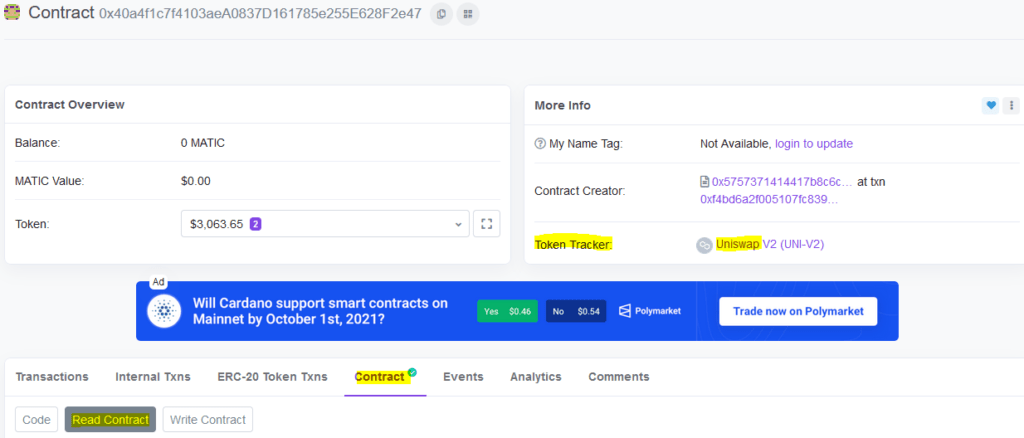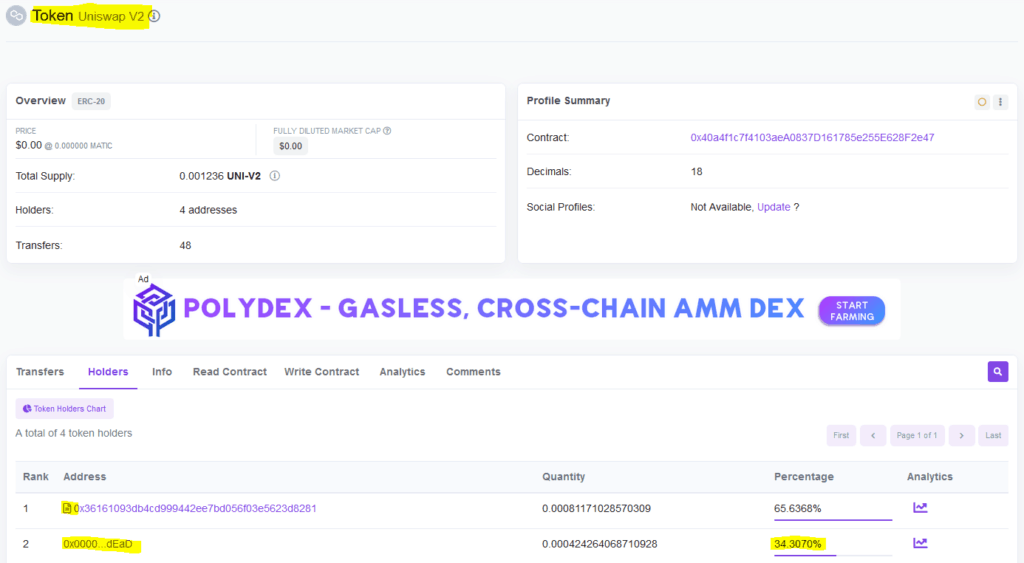In order to check if at least a part of the liquidity is burned before the farming starts, you can check the liquidity token contract for the current holders. If liquidity is “burned” this means it cannot be removed at any time. Having liquidity locked or burned is a good sign for the investors, as it cannot be removed short term, which reduces the soft-rug risk a lot. If liquidity is removed this would lead to the problem that the investors cannot trade their tokens anymore.
Find the token contract #
If you have the token contract already available you can continue aquí. You can find the token contract via the masterchef. We will use este Masterchef as an example.
Navigate to “Contract” and select “Read Contract”.

Then scroll down to the token name to find the token address.

Use the Token Tracker to find current holders #
Click on the “Token Tracker” token link within the token contract “More Info” block.

On the new page click on “Holders” to see the current list of holders of the token. If the “dEaD” address is one of the holders this means that some tokens are burned and cannot be recovered.

But now we have to distinguish between token burn and liquidity burn as burning tokens is not necessarily helpful for the investor. This is because burning tokens can increase the share of the other holders, which could lead to more price impact when they sell their tokens. Therefore it’s important to find out if liquidity is burned and not only the tokens.
Find the liquidity token contract #
In order to do the same research for the liquidity we need to find the liquidity pair token of the reward token.
In the Masterchef navigate to “Contract” and select “Read Contract” and query the pool info starting with 0.

Then click on the lpToken address to find out if this pool is the liquidity pair of the reward token.
If it shows “Uniswap” in the “Token Tracker” info you found a liquidity pool but we have to check the underlying tokens to be sure we have the right one. Therefore we read the contract information with “Read Contract” and scroll down to the “Token0” and “Token1” blocks.


By following the linked addresses we find out which tokens are in this liquidity pool. In our example it’s USDC and Plague Token (Native Token). So we have found the correct pool.


We can now have look on the holders list of the liquidity pool token to check if this liquidty is burned. As you can see 34% of the liqudity is burned, qhich is a good sign. As this liquidity cannot be removed at any time, it can reduce the risk of soft-rug significantly depending on the burned amount. In addition to that the largest holder is the masterchef itself. This may increase the risk of the dev dumping liquidity if they are they majority holders of the initial liquidity.

Conclusión #
You now know how to check if tokens or liquidity is burned or not. This is not the only way to reduce the risk for investors, but it’s a very transparent one. There also is the possibility of liquidity locking which we will explain in a separte article. You can also check out this video where we also explain the topic.